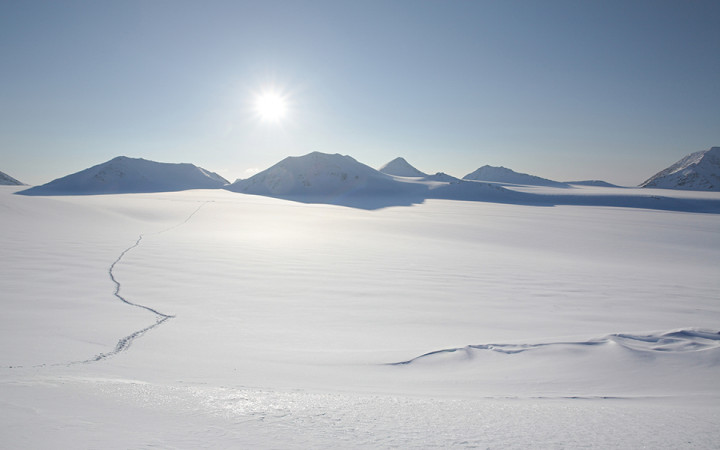Today’s Wonder of the Day was inspired by Kylee. Kylee Wonders, “How do phytoplankton help us breathe?” Thanks for WONDERing with us, Kylee!
When you think of the Arctic, what comes to mind? For many people, the Arctic is nothing more than a vast expanse of ice and snow with very little life.
However, there are some people and plenty of animals that call the Arctic home. Many of those animals, from lemmings and ground squirrels to musk oxen and polar bears, have adapted to their cold surroundings quite well.
Surviving the cold temperatures is one obstacle, but some of our Wonder Friends have been WONDERing how people and animals in the Arctic breathe. After all, there aren't many trees in the Arctic to produce the life-giving oxygen people and animals need to breathe.
It's true that there aren't many trees in the Arctic. The conditions in the Arctic, such as low temperatures, fierce winds, and lack of sufficient rainfall and sunlight, simply don't allow many trees to grow.
The point beyond which trees are unable to grow is called the treeline. In fact, some scientists use the treeline to define where the Arctic begins.
It's also true that trees produce oxygen through a process called photosynthesis. Scientists estimate that there are about three trillion trees on Earth. When you add in all the shrubs, grasses, and other plants that also produce oxygen by photosynthesis, it adds up to a lot of oxygen.
Oxygen makes up about 21% of Earth's atmosphere. However, only about half of that oxygen comes from trees, shrubs, grasses, and plants. Fortunately for the living creatures in the Arctic, the other half comes from the world's oceans.
Once again, photosynthesis is the process at work creating the oxygen. Rather than trees, however, oxygen is created in oceans by microscopic single-celled organisms called phytoplankton.
Phytoplankton makes up the wide base of the lowest level of the oceanic food pyramid. Basically everything that lives in the sea owes its existence to these tiny organisms that live on or near the ocean's surface.
Phytoplankton absorbs nutrients from ocean water and energy from the Sun. They convert the nutrients and carbon dioxide into organic compounds that form new plant material. In the process, they release oxygen into the water.
Although many scientists report that phytoplankton produce about half of Earth's oxygen, others believe it may be more like 70-80%. If you consider that about 71% of Earth's surface is covered by oceans, then perhaps it's true that phytoplankton could be responsible for more than half our oxygen supply.




